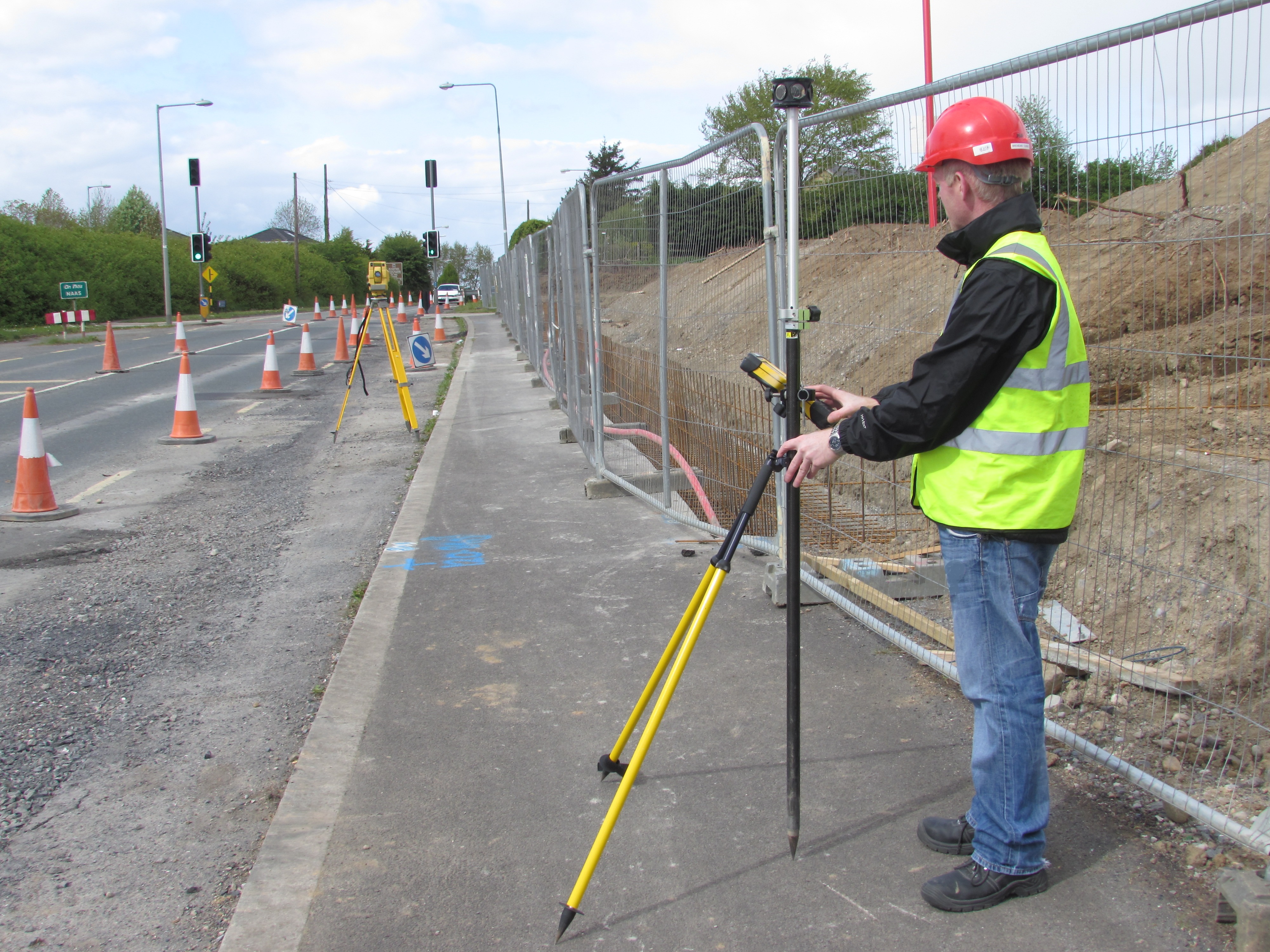SETTING OUT WORKS
A building is set out in order to clearly define the outline of excavation and the Centre lines of the walls, so that construction can be carried out exactly according to plan. The centre line method of setting out is generally preferred and adopted.
Procedure
From the plan, the centre lines of the walls are calculated. Then the centre lines of the rooms are set out by setting perpendiculars in the ratio 3:4:5. Suppose the corner points are A, B, C, D,E. F, and G which are ,marked by pegs with nails on top.
The setting of the corner points is checked according to diagonals AC, BD, CF and EG.
During excavation, the centre points A, B, C, … may be removed, Therefore, The centre lines are extended and the centre points marked about 2 m away from the outer edge of excavation. Thus the points A1, A2, B1, B2, are marked outside the trench. The centre lines are shown clearly by stretching thread or rope. The centre points fixed 2 m away from the excavation are marked with stout pegs.


From the plan, the width of excavation is found out and set out around the centre line. The excavation width is also marked by thread with pegs at appropriate positions. The excavation width is then marked by lime or by making a furrow with a spade. If the plan is much too complicated and follows a zig-zag pattern, the centre pegs are kept at suitable positions according to site conditions.
The term route survey refers to surveys necessary for the location and construction of lines of transportation or communication that continue across country for some distance, such as highways, railroads, open-conduit systems, pipelines, and power lines. Generally, the preliminary survey for this work takes the form of a topographic survey.
In the final stage, the work may consist of the following:
- Locating the center line, usually marked by stakes at 100-ft intervals called stations.
- Determining elevations along and across the center line for plotting profile and cross sections
- Computing the volumes of earthwork and preparing a mass diagram
- Locating right-of-way boundaries, as well as staking out fence lines, if necessary.
BASIC SERVICES
- Cadastral Survey
- GPS, RTK, DGPS Survey
- Final Location Survey
- Contour Survey
- Drawing Digitization
CONSTRUCTION SERVICES
- Engineering Survey
- Pipeline Survey
- Topographical Survey
- Land Survey
OTHER SERVICES
- Road Survey
- Railway Survey
- Airport Road Survey
- Dam Survey
- Bridge Survey
- Hill Survey
- River Survey
